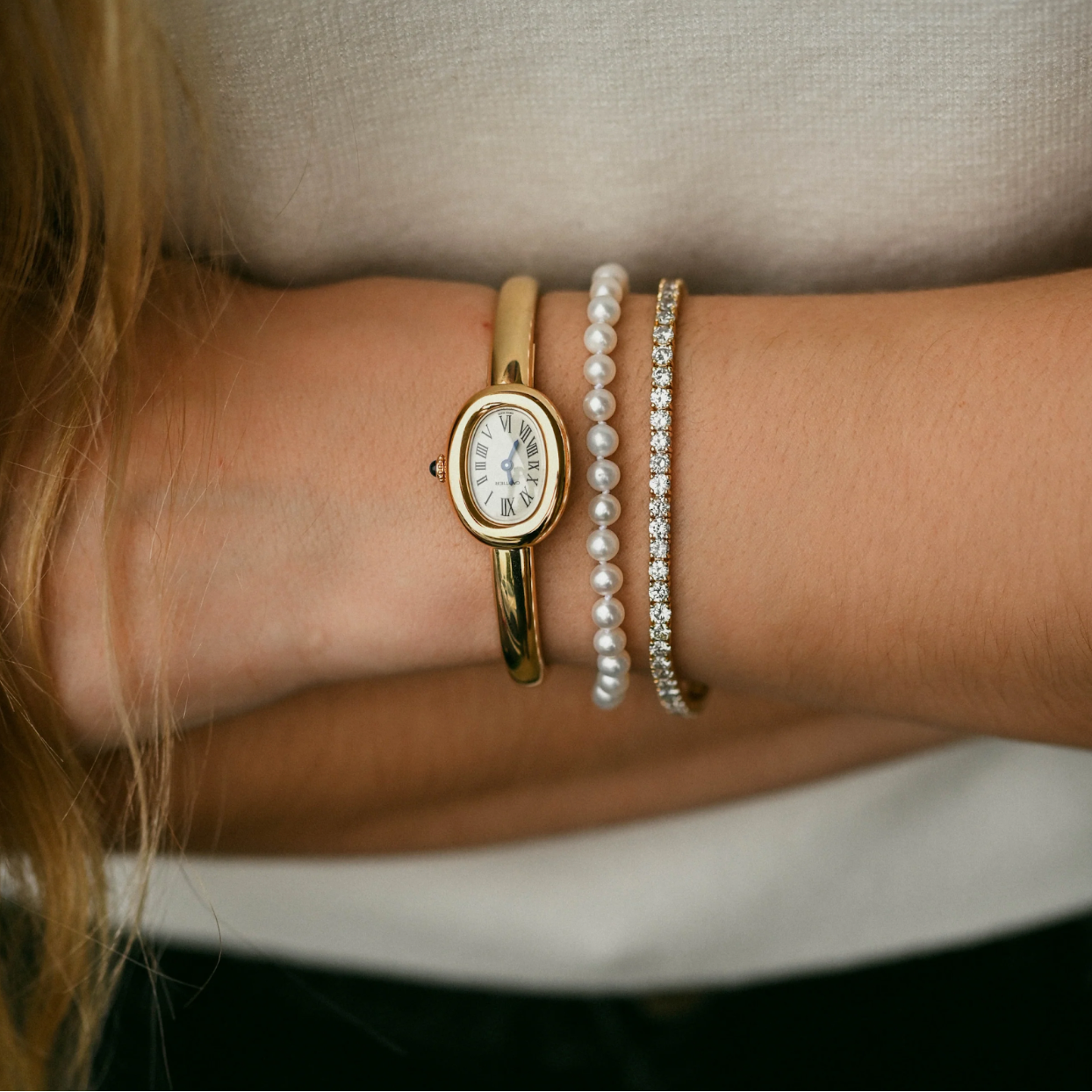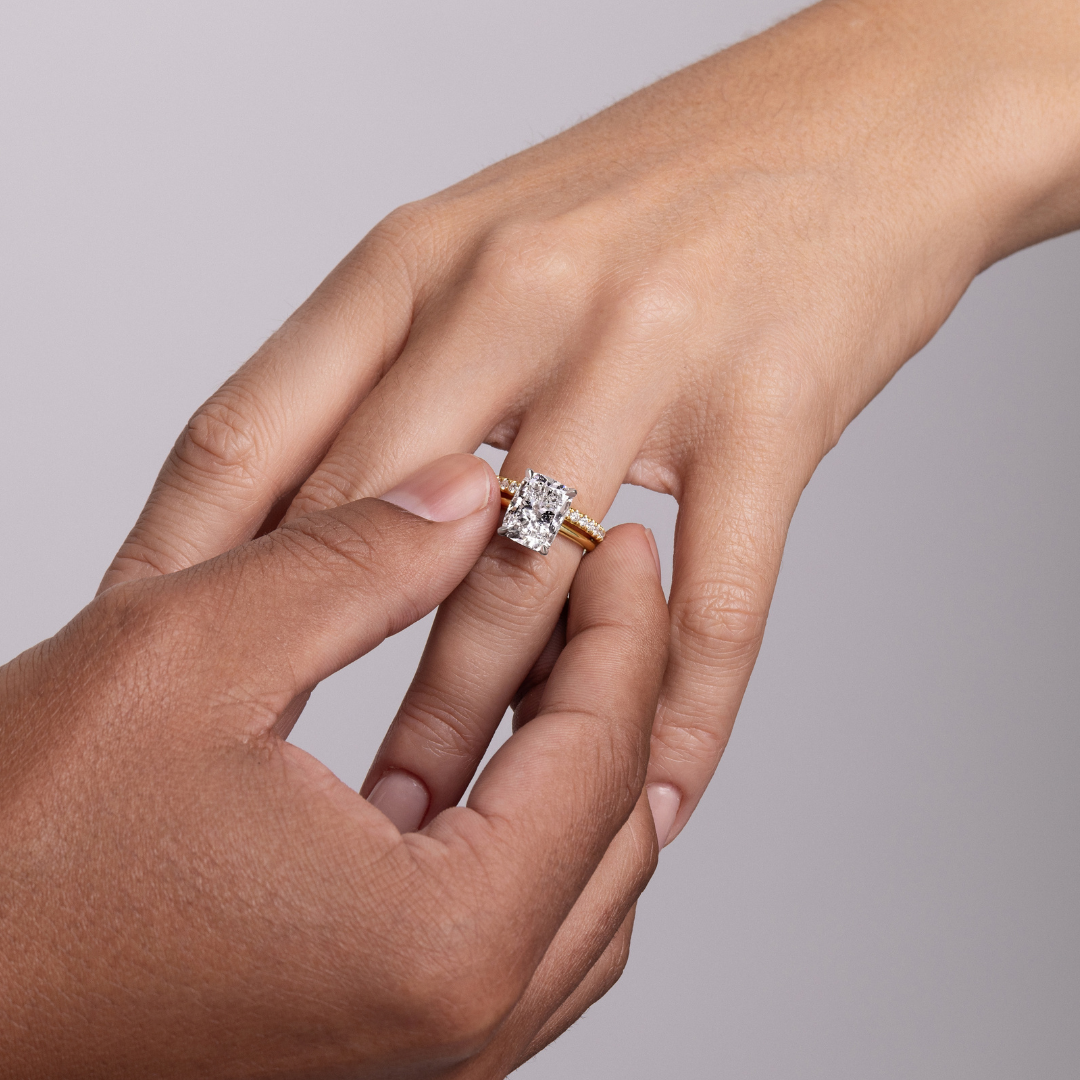Two diamonds are seemingly identical to the naked eye. They are both crystal clear, giving off a kaleidoscope of colors when viewed in direct light. One diamond was recently created in a lab; another is billions of years old.
Both samples of carbon crystallized are diamonds, with one being a natural diamond developed deep within a young earth. The other is part synthetic diamond. A synthetic diamond possesses the same physical, optical, and chemical characteristics as the natural, mined diamond.
If they are both similar, why is there a discrepancy when it comes to their labels? This article aims to shed more light on these two diamond groups: lab vs natural diamond.
Lab vs Natural Diamond: What's in a Diamond?
According to the FTC, a diamond is a mineral that consists of pure carbon that has been crystallized in an isometric cubic system. And while this definition states that diamonds are purely made of carbon, most natural or mined diamonds tend to have trace amounts of other elements, such as nitrogen or boron.
Additionally, an earth mined diamond contains inclusions, which are minuscule traces of foreignobjects that became trapped during the diamond's formation stage.
On the other hand, a lab made diamond is a recent occurrence in the diamond jewelry and gem market, having only appeared in commercial quantities less than seven years ago.
To the naked eye, a manmade or lab made diamond is identical to natural diamonds in appearance. However, there are subtle differences between the two that can only be recognized by trained gemologists.
Lab-Created Diamond vs Natural Diamond: Where Do These Diamonds Originate From?
Laboratory-Created Diamonds
Laboratory grown diamonds were first developed for industrial use in the 1950s,while gem-quality diamonds were produced in 1971. However, it was not until the 2010s that jewelry-grade synthetic diamonds were developed in commercial quantities to enter the diamond jewelry market.
These diamonds are created using the HPHT (or High Pressure, High Temperature) and CVD (or Chemical Vapor Deposition) methods.
It is crucial to note that cubic zirconia and moissanite are not classified as diamonds. Instead, this diamond alternative is classified as diamond simulates. Their role is to imitate diamonds, but they do not have the same chemical composition as either artificial diamonds or natural diamonds.
HPHT Diamonds
These diamonds are developed in a laboratory by recreating the high pressure and high-temperature conditions found within the earth. Due to this process, the crystal created has a distinct shape.
CVD Diamonds
The chemical vapor deposition (CVD) process requires that a carbon-rich gas, like methane, is broken down into hydrogen and carbon atoms. These atoms are then placed on diamond seeds to create a tubular diamond crystal.
Choosing to create diamonds by either of the methods above takes almost a month for most sizes. In addition, CVD diamonds typically require additionaltreatments such as irradiation or heat to change or enhance their colors after the growth process.
Diamonds that are grown in a laboratory typically weigh about one carat. However, thanks toinnovations in techniques and technology, larger crystals have begun appearing in the market.
Natural Diamonds
Natural or real diamonds are created under high temperature and extreme pressure deep in theearth's crust about 3 billion years ago. They surfaced due to volcanic activity, which createskimberlite pipes - a volcanic rock formation where the diamonds lay to be mined. About 5% of kimberlite pipes have enough diamonds in them to make mining economically feasible.
Lab-Created Diamond vs Natural Diamond: Are Lab Made DiamondsAny Good?
A lab-made diamond, when perfectly cut, is virtually indistinguishable from a natural diamond. However, both sets of diamonds exhibit internal inclusion to certain degrees. These inclusions act like fingerprints and are graded and referenced according to gemological labs.
Natural and lab-grown diamonds with lower clarity grades have inclusions that are visible to thenaked eye. The color and cut of a diamond are also important when a grading report is made. These factors determine if a diamond is poor, good, very good, or excellent.
Why You Should Get a Lab Diamond
Chemical vapor deposition (CVD) and high pressure, high-temperature diamonds (HPHT)typically cost 30% to 50% less than natural diamonds. This means that a larger diamond can be purchased without losing the underlying factor that it is indeed a diamond.
As stated earlier, the difference between the two diamond groups requires a trained gemologist to notice or pinpoint, as lab diamonds have the same chemical and physical characteristics as natural diamonds, meeting the 4 Cs.
There are schools of thought who say lab diamonds are more ethical since no mining process is involved. However, this thought can be negated by the Kimberley Process, which stopped the influx of conflict diamonds in 2003.
Lab diamonds are a great alternative to buying a more expensive real diamond if your main aim of purchasing a diamond is not its resale value.
Why You Should Get a Real Diamond
For one, natural diamonds have a rarity factor. A natural diamond is known to retain its value much better compared to a lab-made one due to its finite supply. A natural diamond's value is influenced by the basic law of supply and demand, so its value increases with an increase in demand and a finite supply.
Lab-created diamonds, by their name, can be created, meaning they might be unable to retaintheir value in the long term. Their seemingly endless supply affects their resale value. While a lab diamond doesn't have the ethical and environmental issues associated with a natural diamond, there still are concerns about sustainability.
For example, a high-pressure, high-temperature (HPHT) diamond requires vast amounts of energy to be created. The amount of energy required to create a CVD is enough to power the average home for an entire month.
Lab vs Natural Diamond: Are There Ways to Certify Diamonds?
Considering that lab-created diamonds have the same chemical composition as natural diamonds, it makes perfect sense that they come with certification. As a result, the majority oflab-created diamonds today are certified by the International Gemological Institute or IGI.
An IGI diamond grading report accurately appraises a diamond's clarity, color, carat weight, and cut according to stringent international standards.
Additionally, these diamonds are certified and accepted by The Gemological Institute ofAmerica or GIA. The GIA has created sophisticated tools to appraise and recognize thedifferences between lab-made diamonds and natural diamonds.
Should You Get a Lab-Created Diamond Over a Natural Diamond?
There is no correct answer to this question of choosing between natural diamonds or created diamonds. It really is up to the buyer. However, you will need to consider a few factors, such as your budget, your preference, and if you would like to sell your diamond down the line.
The price of a lab grown diamond continues to fall while demand grows. There is an intrinsic value in a lab grown diamond. However, due to its relative infancy in the gem and jewelry market, its resale value has not been able to catch up with its demand.
If the demand for lab-created diamonds continues to grow in tandem with the creation of newtechniques and technologies, then it is only a matter of time before lab-created diamonds begin showing their long-term value, just like their natural diamond counterparts.






Share:
How to Sell Scrap Gold
How to Find Out Someone's Ring Size without Asking Them